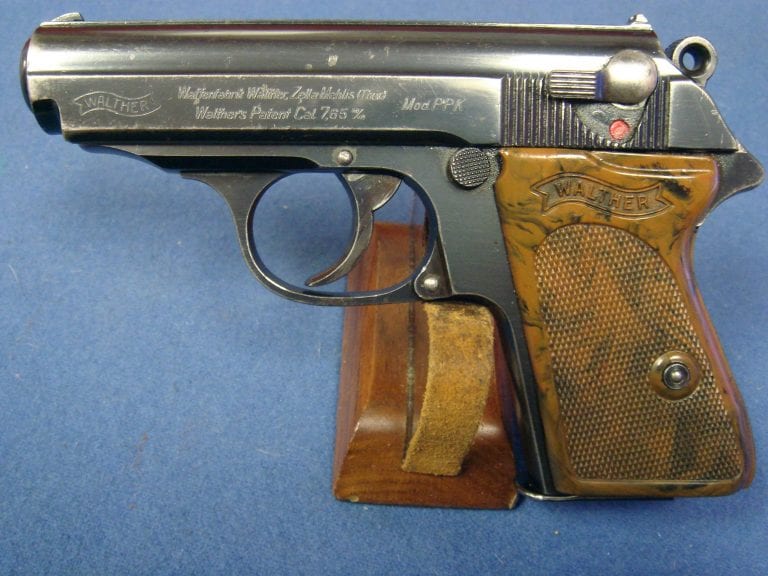

Its smaller cousin the PPK, more readily concealed for undercover work but with reduced magazine capacity, was produced from 1931. The innovative Walther PP (Polizeipistole), a double-action semi-automatic pistol intended for the law-enforcement market, became available in 1929 and went on to arm the police of several European countries in the 1930s. Inside the holster it is marked in ink: "May 12, 45/MUNICH GERMANY".While the PP and PPK were intended for police work, the Walther P 38 was produced for the Germany military all three pistols have garnered a formidable international reputation since the 1930s.

This pistol is accompanied by an unmarked WWII commercial leather holster. This pistol has two magazines one with the matching mottled brown plastic, finger rest base and the second one with a postwar production "cal 9mm" marked, black plastic finger rest base. It is fitted with the mottled, brown plastic grips with the "WALTHER" banner on each side. It has the 90 degree safety with the loaded chamber indicator above the firing pin. The last three digits of the serial number, (192) are correctly scratched on the inside of the slide. The right sides of the barrel, chamber area and slide have the early "Crown/N" commercial proof. It has the standard Walther Banner slide marking followed by the two line factory address and caliber markings followed by the circled "RZM" markings. The "RZM" markings are found in several serial numbers ranges, during Walther PPK production, with the earliest block being 803,638-844,468, with this example falling right in the middle of this block. The Reichs Zeugmeisterei (RZM) served as the quartermasters office of the National Socialists (NSDAP) and later became the chief approving authority on many types of military weapons, clothing, textiles and some raw materials. This is a fine Walther PPK pistol with the high desirable/scarce "RZM" markings on the slide.


 0 kommentar(er)
0 kommentar(er)
